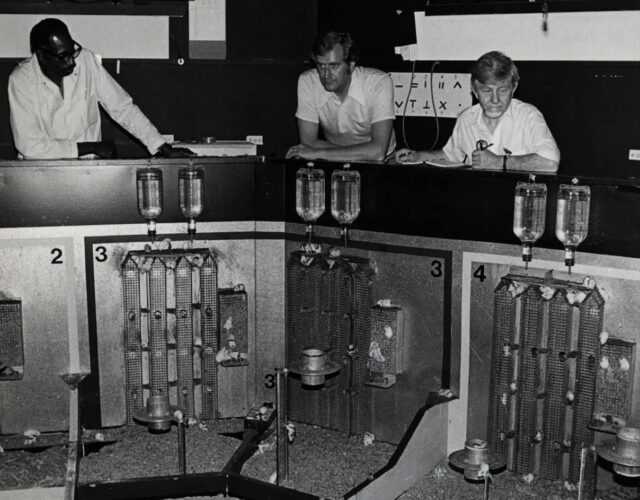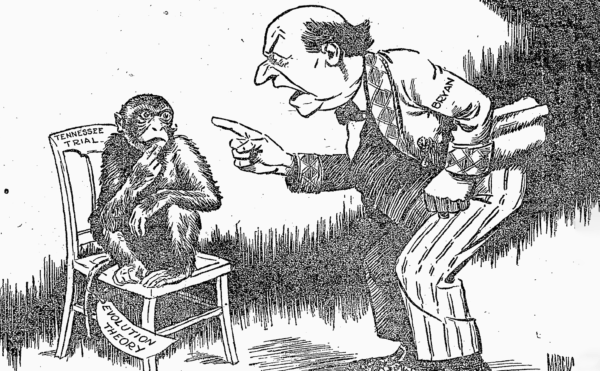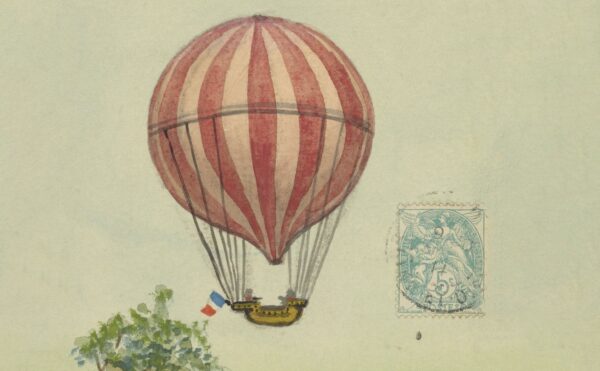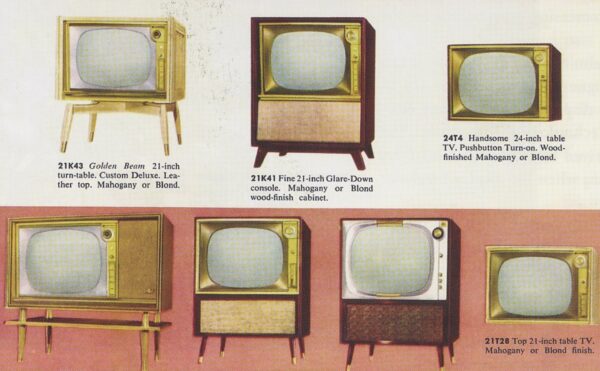John Calhoun’s colony was a mouse utopia—a giant pen with everything a mouse could ever desire: plenty of food and water, a perfect climate, and reams of paper to make cozy nests. But the thing is, this wasn’t the first rodent heaven that Calhoun built. And by this point, he knew not to expect a happy ending. Because he also knew just how quickly mouse heaven can deteriorate into mouse hell.
About The Disappearing Spoon
The Science History Institute has teamed up with New York Times best-selling author Sam Kean to bring a second history of science podcast to our listeners. The Disappearing Spoon tells little-known stories from our scientific past—from the shocking way the smallpox vaccine was transported around the world to why we don’t have a birth control pill for men. These topsy-turvy science tales, some of which have never made it into history books, are surprisingly powerful and insightful.
Credits
Host: Sam Kean
Senior Producer: Mariel Carr
Producer: Rigoberto Hernandez
Associate Producer: Padmini Raghunath
Audio Engineer: Jonathan Pfeffer
Transcript
Most scientific papers are bland—even bloodless. Not John Calhoun’s. Calhoun titled his most famous paper “Death Squared.” And in it, he quotes from the fiery Book of Revelations and invokes the dreaded Four Horseman of the Apocalypse.
Now, what sort of experiment could justify such thundering rhetoric? <SQUEAK> A colony of mice. Seems like a stretch, right? But…
In short, Calhoun’s colony was a mouse utopia—a giant pen with everything a mouse could ever desire. Plenty of food and water; a perfect climate; reams of paper to make cozy nests. He also kept away all predators, and screened the mice to eliminate all disease. A mouse could live to ripe old age there, and never worry about a thing.
Officially, Calhoun called this setup the “Mortality-Inhibiting Environment for Mice.” Unofficially, it was mouse heaven.
But the thing is, this wasn’t the first rodent heaven that Calhoun built. This was the 25th attempt. And by this point, he knew not to expect a happy ending. Because he also knew just how quickly mouse heaven can deteriorate into mouse hell.
John Calhoun looked like the action-movie star Charles Bronson. Squinty eyes, strong chin, a mustache. He was born and raised in Tennessee, and conducted the mouse utopia studies at the National Institute of Mental Health, or NIMH.
He built the 25th utopia in 1968. It was a box 4½ feet square, with soft ground-up corncobs on the floor. The walls were also 4½ feet tall, with slick metal siding to prevent mice from escaping.
Each wall had mesh tubes bolted to it that led into tiny mouse apartments—256 total. And again, the mice had all the food and water they needed, plus complete freedom from cold, disease, and predators. Heavenly conditions.
Calhoun introduced the first four males and four females—all albino house mice—in July 1968. It took these eight a while to feel comfortable in utopia. You can imagine them thinking, “Wait, something has to be wrong here, right?”
But once they settled in, life proceeded pleasantly. The first mouse pups were born after 3½ months, and the population doubled every two months afterward. Eventually, this torrid growth slowed. But the population continued to climb until the 20th month, when it peaked at 2200 mice.
Things weren’t as rosy as they appeared, however.
In the wild, most mouse pups get eaten or die of disease or cold. Infant mortality is high. But in mouse utopia, pups rarely died. As a result, the pen got overcrowded with youngsters, which introduced several problems.
You see, mice have strict social hierarchies, with dominant alpha males controlling harems of females. That might sound strange, to talk about alpha-mice. After all, mice are proverbial cowards—always skittering off in the other direction. But among their own kind, there are some tough-guy mice.
Mice establish dominance by wrestling and biting each other. It gets vicious. And normally, a mouse that loses a fight will scurry off to some distant nook to start a new life elsewhere.
But in mouse utopia, the loser mice couldn’t escape. And because so few juveniles died, there were suddenly huge hordes of loser mice with nowhere to go.
Calhoun called these loser males the “dropouts.” They’d gather in the center of the pen, full of cuts and scars from their lost battles. Every so often, huge brawls would break out among them, vicious free-for-alls of biting and clawing that served no obvious purpose. It was just senseless violence. In earlier utopias involving rats, some dropouts even resorted to cannibalism.
Things got rough for the alpha mice, too. These males kept their harems in private apartments, and had to defend the apartments from challengers. And given how many mice survived to adulthood, there were always a dozen hotshots ready to pick fights. Pretty soon the alphas were exhausted. Some stopped defending their apartments altogether.
As a result, the nursing females inside the apartments were suddenly beset by rogue invaders. The nursing mothers therefore had to go on the attack instead of devoting themselves to childcare, and their young suffered as a result.
Many stressed-out mothers booted their youngsters from the nest early, before they were ready. Some mothers even panicked and attacked their own young. Or the abandoned them while fleeing to different apartments, leaving the pups to die of neglect.
Eventually, other, even more socially destructive behavior arose.
Pups who’d been raised improperly or booted from the nest early often failed to develop healthy social bonds with other mice. As a result, they struggled with social interactions as adults.
Maladjusted females began isolating themselves in empty apartments, which is highly unusual for mice. They’re rarely hermits.
Maladjusted males proved even stranger. They would gather in large crowds and just … lick themselves. That’s how mice groom, by licking themselves, and they’d engage in this beauty regimen hour after hour, day after day. Calhoun dubbed them “the beautiful ones.” And yet, despite their obsession with beauty, these males had zero interest in courting females, zero interest in sex. Calhoun was baffled.
Intriguingly, Calhoun had noticed in earlier utopias that maladjusted behavior like this could spread from mouse to mouse. It was contagious. He dubbed this phenomenon “the behavioral sink.”
These behavioral sinks proved disastrous for utopia 25. Every hour spent alone or grooming was an hour not spent mating or raising young. As a result, the birthrate started dropping. Even worse, the few mice who did breed had no role models for raising pups—they’d never been taught how. And the younger generations paid the price. By month 22, mice pups rarely survived more than a few days after birth. Eventually, new births stopped altogether.
Older mice did live on—at least for a while. But by 1972, four years after the experiment started, the population of utopia 25 had crashed from 2200…to zero. Mouse heaven had gone extinct.
Now, I admit I find this story compelling in a lurid sort of way—how heaven can transform into hell.
But what really interests me isn’t what happened to the mice. It’s what happened to the people—the people who read about Calhoun’s work when it was published. Because many of them panicked—because they saw in these mice a parable for the collapse of human society.
John Calhoun explicitly encouraged people to link the collapse of utopia 25 to humankind. In his “Death Squared paper,” he wrote, quote: “For an animal so complex as man, there is no logical reason why a comparable sequence of events should not also lead to species extinction.”
Other scholars have drawn similar conclusions. The year Calhoun started the mouse utopia, a Stanford University biologist wrote an alarmist book called The Population Bomb. It warned of mass starvation on an overpopulated Earth. Popular culture echoed this theme in movies like Soylent Green, where excess humans in overcrowded cities are culled and turned into food. The idea of dangerous overcrowding was in the air, and sociologists say Calhoun’s mice as a cautionary tale.
Later scholars saw parallels to the Industrial Revolution and the rise of urban society. After all, the 19th and 20th centuries saw population booms across the world, largely due to drops in infant mortality. Just like with the mice.
Recently, however, human birthrates have dropped sharply in many developed countries—often below replacement levels. And surveys indicate that young people in those countries have lost interest in sex. The parallels to utopia 25 seem spooky.
Other critics have blamed the strange behaviors of the utopia mice on a lack of natural selection, which normally culls the weak and prevents the unfit from breeding. This lack of culling resulted in a supposed “mutational meltdown” that led to widespread mouse stupidity. These scholars then warn that humankind, in removing natural selection from ourselves, will face a similar decline into idiocracy.
Still other critics agonize over the loss of traditional gender roles, leaving effete males and hyperaggressive females. Or they interpret the mouse utopia collapse as a parable about the dangers of socialism or welfare states. These critics claim that such states provide material goods but remove healthy challenges from people’s lives, challenges that build character and promote “personal growth.”
Most critics who’ve fretted over Calhoun cluster on the political right. But self-styled progressive critics have used Calhoun as well. Some use him as a cudgel to argue for more birth control. Others have re-interpreted the mice collapse in terms of 1-percenters and wealth inequality: they blame the social dysfunction on a few aggressive males hoarding precious resources. To them, utopia 25 had a “fair distribution problem” above all.
Hell, I even came up with an interpretation of my own. Maybe utopia 25 shows the dangers of intergenerational conflict—when old fogeys just won’t go away, and younger generations resent them for lingering on in high-status roles.
Given these wildly varying readings, it’s hard to escape the suspicion that these critics are letting their personal and political views color their outlook. Ultimately, in fact, I’m not sure any of these interpretations hold water.
When predicting population crashes among human beings, environmentalists always claimed that overcrowding would lead to widespread shortages of food and other goods. But that’s the opposite of the case with utopia 25. There, the mice had all the material goods they wanted. This fact also undermines the arguments about unfair resource distribution.
Perhaps, then, it was the lack of struggles and challenges that led to dysfunction, as critics of welfare claimed. Except, the spiral of dysfunction began only when hordes of “dropout” mice lost challenges to alpha males and started fighting each other. The alpha males in turn grew exhausted after too many challenges from hotshot youngsters. In both cases, the mice faced far more competition than what they’d encounter in the wild.
Then there’s the warnings about the decline of intelligence. Not only does this interpretation echo the dark rhetoric of the eugenics movement, it also runs aground on several points. For instance, the hermit females and the preening, asexual males certainly acted oddly—but in doing so, they avoided the vicious, violent free-for-alls that destroyed earlier generations. This hardly seems dumb.
Plus, some of Calhoun’s other research actually saw rodents getting smarter during experiments.
This evidence came from an earlier utopia involving rats. In this case, some dropout rats began digging new burrows into the dirt floor of their pen. Digging like this produces loose dirt to clear away. And most rats laboriously carried the loose dirt back outside the tunnel bit by bit, to dump it there. It’s necessary but tedious work.
The dropout rats did something different. Instead of carrying loose dirt out bit by bit, they packed it all into a ball and rolled the ball out the tunnel in one trip. Calhoun compared this innovation to humankind inventing the wheel. And it happened only because the rats were isolated from the main group and didn’t learn the dominant method of digging.
By normal rat standards, this was deviant behavior. It was also a creative breakthrough. Overall, then, social strife can sometimes push creatures to become smarter, not dumber.
(Incidentally, after utopia 25’s collapse, Calhoun began building new utopias to encourage creative behavior and keep mice physically and mentally nourished. This research about making super-smart rats in turn inspired a children’s book named after Calhoun’s workplace—Mrs. Frisby and the Rats of NIMH.)
Overall, then, the collapse of utopia 25 does not imply that humans will get dumber as our planet gets more crowded. In fact, similar to Calhoun’s rats, there’s actually evidence that human beings are getting smarter over time.
It’s called the Flynn effect. Basically, the Flynn effect says that the IQ of human beings across the world has been steadily increasing for the past century, and continues to do so today.
I’ve actually put together a bonus episode about the Flynn effect at patreon.com/disappearingspoon. It’s fascinating stuff—and it’s highly controversial, since the Flynn effect has been dragged into all sorts of debates on intelligence, sex, genetics, and race. Overall, it will change how you think about IQ forever. That’s patreon.com/disappearingspoon.
Now, however flawed IQ is, it does capture a certain kind of smarts. And it’s awfully hard to argue that people worldwide are getting dumber when our IQ keeps rising. Just like with Calhoun’s rodents, crowding does not seem to lead to stupidity.
So where does that leave us? If all those ways interpreting utopia 25 miss the mark, what lesson can we draw from the experiment?
Calhoun drew a lesson about status. Again, the males who lost fights for dominance couldn’t leave to start over elsewhere. They were stuck in pathetic, humiliating roles and lacked a meaningful place in society. The same went for females when they couldn’t raise their pups properly. Both groups became depressed and angry and began lashing out as a result.
In other words, because mice are social animals, they need a meaningful social role to feel fulfilled. So do humans. We’re also social animals, and without a meaningful role in society, we too become hostile and depressed and lash out. It kind of makes sense.
Still, even this interpretation seems like a stretch. Humans have far more ways of finding meaning than pumping out children or being the alpha in some petty hierarchy. Honestly, the only safe conclusion I can draw about utopia 25 is that … maybe the experiment doesn’t actually apply to human beings. In which case, the best lesson to draw is a meta-lesson—a lesson about the dangers of drawing hasty lessons.
In the very early days of science, many natural philosophers objected to the very idea of lab experiments. For instance, in the 1660s, Isaac Newton used a prism to decompose sunlight into the colors of the rainbow. Newton cited this as proof that so-called white light was really a mix of multiple colors. But critics objected that he’d gone too far in his interpretation. His lab work seemed artificial, contrived. Perhaps the glass prism had corrupted the sunlight or something. How did he know his results applied to the real world?
These critics raised similar objections over experiments in chemistry and physiology and other fields. How can we be sure that compounds or chemicals behave the same way in nature as they do in some artificial lab setup?
Nowadays, with more perspective, we can see that Newton and other experimenters were correct. Lab work can indeed teach us amazing things about nature. In fact, lab experiments have proved so successful that many of us of take their applicability for granted. Whenever we hear of some experiment, no matter how contrived, we rush to apply the results to the real world. It’s a reflex.
But should it be? Experiments on light or chemical reactions are fairly simple compared to Calhoun’s rodent utopias. In complicated setups like that, maybe those early critics of lab work had a point. Ultimately, the different interpretations of Calhoun’s work seem like Rorschach blots—people seeing what they want to see. Maybe his experiments don’t apply anywhere beyond the lab. After all, this was a mouse utopia—and utopia literally means nowhere.
Image courtesy of the National Library of Medicine




